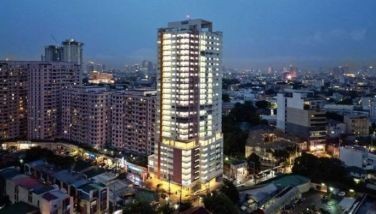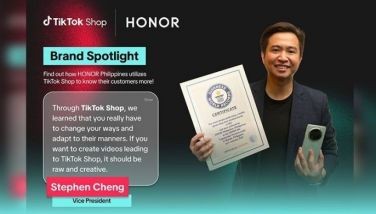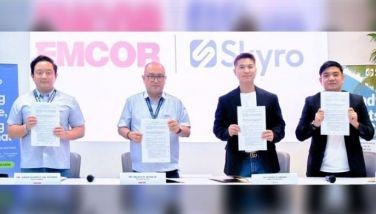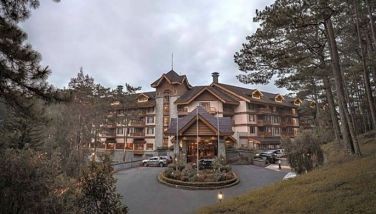Creating New History
November 14, 2001 | 12:00am
 If the cars it displayed at the 35th Tokyo Motor Show were of any indication, it is that Mitsubishi Motors Corp. is deadset in telling the whole world that it has evolved into a new company – with a new history.
If the cars it displayed at the 35th Tokyo Motor Show were of any indication, it is that Mitsubishi Motors Corp. is deadset in telling the whole world that it has evolved into a new company – with a new history.
Having recovered from the controversial scandal that stemmed from its cover-up of thousands of recalled vehicles the past several years and having been taken over by DaimlerChrysler, Mitsubishi has adapted a new image that is not as technocentric as before.
Olivier Boulay, the new head of the automaker’s design team, said Mitsubishi is now focusing on providing cars that would cater to different lifestyles and various kinds of people.
"Our message is that Mitsubishi will provide some quite different lifestyle-oriented vehicles," he said. "This is why we decided to switch our design to a more friendly look. After all, we sell to people, not computers."
At a briefing in Tokyo before the show formally opened to the public, Boulay accused Mitsubishi of being excessive on technology, an emphasis that left customers with an image that the company was "cold and unfriendly."
"We want to change that image," he said, pointing to an ice cube that he used as a backdrop to stress his point.
Mitsubishi showcased four concept cars in the 12-day motor show at the sprawling Makuharri Messe exhibition halls, located on a land reclaimed from the Tokyo Bay.
The four cars – the Space Liner, the SUP, the CZ2 and the CZ3 Tarmac – were testaments to the drive of Boulay, who joined Mitsubishi as head designer in April, and the company’s creativity.
While other companies spend at least a year preparing concept vehicles, or those that are mere idea cars, Mitsubishi’s four concepts were created in less than six months.
The new look designed by Boulay has debuted on all four concepts. Aside from the new body lines that give the vehicles a high-tech look, Boulay has made the Mitsubishi three-diamond logo more prominent by increasing its size and placing it between two triangular grill openings. A sharp ridegeline follows the top diamond in the logo from the center of the bumper up into the hood. With the logo now more prominently displayed, putting the name "Mitsubishi" on the exterior of the car has become optional.
Yet despite its being high-tech, the Space Liner has an interior which Boulay says was inspired by the "Japanese taste for a soft interface between inner and outer, flexible space composition, natural material feel and soft lighting." The interior’s flexibility is evident by the steering unit which you can stow away when the car is parked.
"We’ve taken the Japanese sense of spatial beauty and used it to create a wholly new type of car. Japanese people demand the ultimate in comfort, as well as futuristic technologies that support comfortable cars. This has created a whole new car never seen before," Boulay said.
The Space Liner, just like the other CZ3 concept, was designed at Mitsubishi’s Tama studio in Tokyo’s western suburbs.
This concept, whose name stands for Sports Utility Pack, seeks to bridge the aspects of the culture of future young people – their addiction to electronic gadgets and their desire to go to inaccessible places and engage in extreme sports.
Hence, the SUP has been designed as a go-anywhere backpack. Custom-designed backpacks are integrated behind the two front seats which the passengers can unclip and use. The translucent door panels are made of the same material as hard-sided suitcases and they can be used to store surfing or snorkeling gears.
Other high-tech off-road touches include a waterproof socket for either CD or DVD player, and a retractable showerhead for washing down after engaging in surfing or any X-sport.
The SUP’s two front wheels run on a GDI (gasoline direct injection) engine, which Mitsubishi pioneered, and each of its rear wheels have a separate motor for power. It has a manual transmission with automated clutch and shifting.
Both have a "wave-form" dash which extends slightly in the center towards the front bench seat. The seat can be folded flat, and stowage compartments include small door trim bags that can be removed for use outside the car and a lunch box in the luggage compartment.
The CZ2 ais powered by a 1.3-liter engine with variable valve timing and has a continuously variable transmission (CVT).
The CZ3 on the other hand is a rally car concept that may probably rival the Lancer Evolution in popularity in the future. With its 1.5-liter GDI intercooler turbocharged engine, which is also mated to a CVT, the CZ3 is a real pocket rocket. It uses the full-time all-wheel drive with active yaw control and active center differential that is found on the Lancer Evo VII.
With all these ideas, Mitsubishi is indeed on the road to creating a new history. Not only for itself but for the automotive industry as well.
BrandSpace Articles
<
>
- Latest
Latest
Latest
October 4, 2024 - 6:00am
October 4, 2024 - 6:00am
September 30, 2024 - 4:26pm
By EC Toledo | September 30, 2024 - 4:26pm
September 26, 2024 - 3:30pm
September 26, 2024 - 3:30pm
August 16, 2024 - 11:00am
By Euden Valdez | August 16, 2024 - 11:00am
Recommended






























